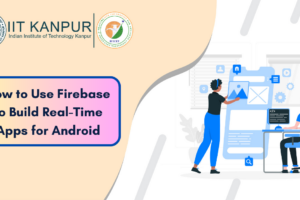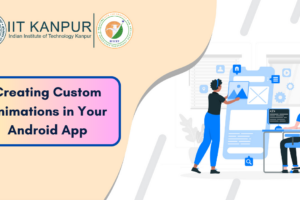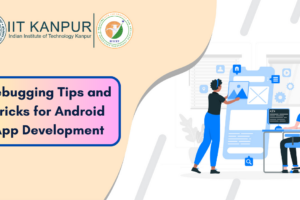In-App Purchases: Monetization Strategies for Your Android App
- Date July 31, 2023
Monetizing your Android application is key to the success and sustainability of your Android application. One of the most well-known tactics for generating profit per Android app is through in-app purchases. In this article, we can explore solid monetization strategies with the use of in-app purchases, helping you maximize your app’s profit eventuality.
Understanding In-App Purchases
Choosing the Right In-App Purchase Strategy
Implementing Effective In-App Purchase Features
Analyzing and Optimizing Monetization Strategies
Understanding In-App Purchases
To thrive in the realm of mobile app monetization, the utilization of in-app purchases has emerged as a widespread and fruitful approach for driving revenue. Acquiring a comprehensive comprehension of the notion behind in-app purchases and their associated advantages plays a pivotal role in the seamless integration of a prosperous monetization strategy for your Android application.
What are in-app purchases?
In the world of mobile applications, in-app purchases include the functionality that enables users to get supplementary features, content, or services directly within the app. This seamless and user-friendly experience allows individuals to unlock premium content, access exclusive features, procure virtual goods or currency, or subscribe to services, all without having to leave the application.
Positive aspects of in-app purchases
- Revenue Generation: In-app purchases provide a consistent revenue stream, allowing you to monetize your app beyond the initial download.
- User Engagement: In-app purchases incentivize users to spend more time within your app, enhancing their overall engagement and satisfaction.
- Customization and Personalization: In-app purchases enable users to personalize their experience by choosing and purchasing features or content that align with their preferences
- Scalability: In-app purchases provide the opportunity for scalability, as you can continuously add new offerings to meet user demands and generate additional revenue.
In-app purchase types
- Consumable: These are items that can be purchased and used multiple times, such as virtual currency or extra lives in a game.
- Non-Consumable: Non-consumable purchases are items that users buy once and have permanent access to, like a premium app upgrade or an ad-free version.
- Subscriptions: Subscriptions allow users to access premium content or services for a specific duration, usually on a recurring basis. Examples include monthly or annual subscriptions for news apps or streaming services.
- Unlockable Content: Unlockable content refers to additional features, levels, or functionalities that users can unlock through an in-app purchase.
Choosing the Right In-App Purchase Strategy
Optimizing revenue generation and ensuring a favorable user experience necessitate the careful selection of the most appropriate in-app purchase strategy. Here we will delve into three widely embraced strategies: the freemium model, the subscription model, and the virtual goods model.
Freemium Model
The freemium model revolves around presenting users with a complimentary version of your app that includes essential features, with the option to unlock additional features or content through in-app purchases. By providing users with a taste of the app’s core features at no cost, this approach allows them to make beneficial decisions regarding their investment in premium offerings.
- Offering a basic version for free
- Providing additional features or content through in-app purchases
Subscription Model
The subscription model involves offering premium content or services on a recurring basis, typically with different subscription tiers and durations. This approach is well-suited for apps that provide ongoing value and regular updates.
- Offering premium content or services on a subscription basis:
- Different subscription tiers and durations
Virtual Goods Model
The virtual goods model involves selling virtual items or currency within the app, allowing users to enhance their experience or progress. This model is commonly used in gaming apps but can also be applied to other types of apps.
- Selling virtual items or currency within the app
- Enhancing user experience and progress through virtual goods
Implementing Effective In-App Purchase Features
Implementing effective in-app purchase features is crucial to drive conversions and enhance user satisfaction. By focusing on seamless user experience, strategic timing and placement, and offering limited-time offers and discounts, you can optimize your in-app purchase strategy.
Seamless User Experience
Providing a seamless and user-friendly purchase process is key to encouraging users to make in-app purchases.
- Intuitive and user-friendly purchase process
- Clear pricing and descriptions for in-app purchases
Timing and Placement
Strategically timing and placing in-app purchase prompts can significantly impact user engagement and conversions.
- Strategic placement of purchase prompts
- Offering relevant in-app purchases at appropriate moments
Offers and Discounts
Creating a sense of urgency through limited-time offers and discounts can motivate users to make in-app purchases.
- Creating a sense of urgency through time-limited promotions
- Rewarding users with discounts or exclusive content
Providing Value to Users
Achieving optimal success with your in-app purchases and creating longer customer relationships depends on the continuous delivery of value to your users. By prioritizing exceptional content and customization features, you can craft a compelling user experience that results in active engagement with your app and motivates users to partake in in-app purchases.
High-Quality Content
Delivering exceptional content within your app is essential for attracting and retaining users.
- Delivering premium and exclusive content
- Regular updates to maintain user engagement
Personalization Options
Allowing users to personalize their experience through in-app purchases creates a sense of ownership and increases user engagement.
- Offering customization features through in-app purchases
- Allowing users to personalize their experience
Analyzing and Optimizing Monetization Strategies
Engaging in an ongoing analysis and optimization of your monetization strategies is important for optimizing profit generation and enhancing user satisfaction. Through the strategic use of analytics, data tracking, and the implementation of A/ B testing, you get precious insights that enable you to make logical opinions and fine-tune your in-app purchase strategy to its utmost capability.
Analytics and Data Tracking
Leveraging analytics and data tracking tools are essential for understanding user behavior and purchasing patterns.
- Monitoring user behavior and purchasing patterns
- Identifying opportunities for improvement and optimization through gathered data
A/B Testing
A/B testing involves experimenting with different variations of your in-app purchase strategy to determine the most effective approach.
- Experimenting with different pricing strategies
- Optimizing in-app purchase placements and offerings
Maintaining User Trust and Transparency
Maintaining user trust and transparency is paramount to the success of your in-app purchase strategy. By ensuring clear privacy policies, appropriate pricing, and avoiding deceptive practices, you can establish a positive relationship with your users.
Clear Privacy Policies
Protecting user data and privacy is crucial for building trust.
- Ensuring user data protection:
- Complying with privacy regulations (e.g., GDPR):
- Stay up to date with privacy regulations in your target markets and ensure your app’s practices align with the requirements. Make privacy policies easily accessible to users.
Appropriate Pricing
Fair and reasonable pricing practices contribute to user trust and satisfaction
- Offering fair and reasonable pricing:
- Avoiding deceptive practices and hidden cost
- Be transparent about the content and benefits of in-app purchases. Avoid misleading users with hidden costs, unexpected charges, or unclear descriptions.
Conclusion
In-app purchases can be an effective monetization strategy for your Android app, providing sustainable revenue circulation while at the same time presenting value to your customers. By choosing the proper in-app buy version, implementing seamless features, offering valuable content material, and constantly analyzing and optimizing your techniques, you could efficiently monetize your app and create a win-win scenario for your enterprise and your customers as well. Remember, transparency and consumer trust are key to building a hit and profitable app.
Previous post
Ethical Implications of Artificial Intelligence: Ensuring Responsible and Human-centric AI Development
You may also like

How to Use Firebase to Build Real-Time Apps for Android

Creating custom animation in your Android app


